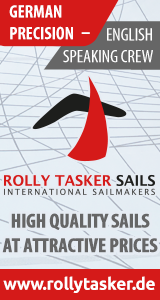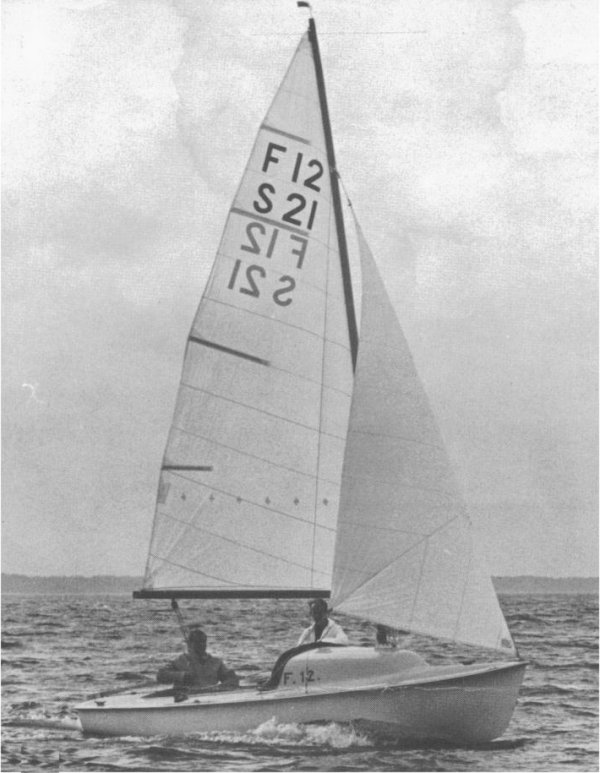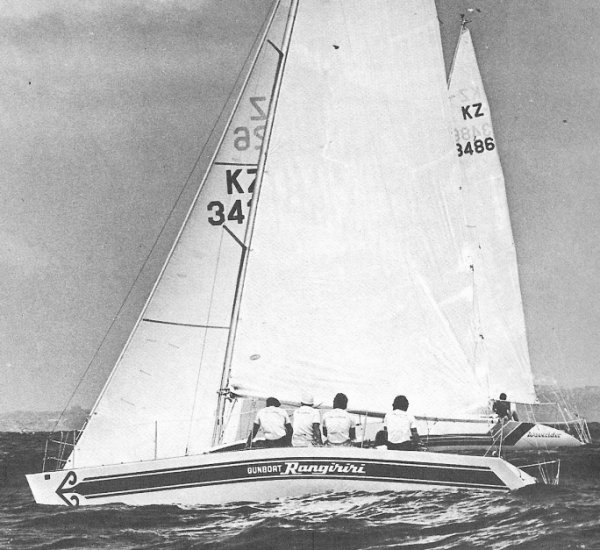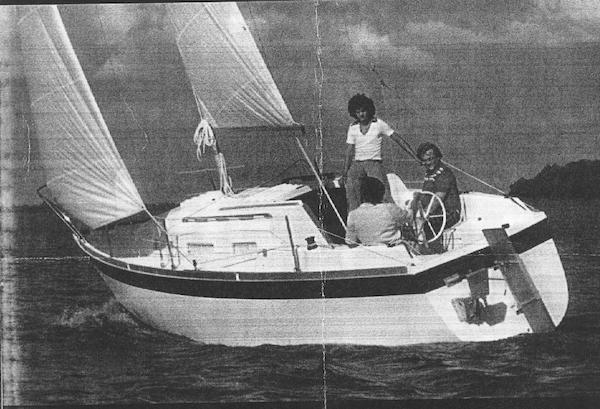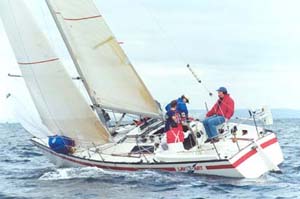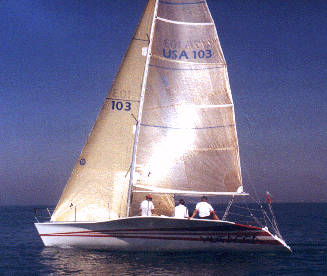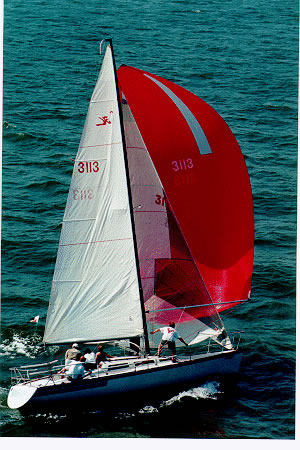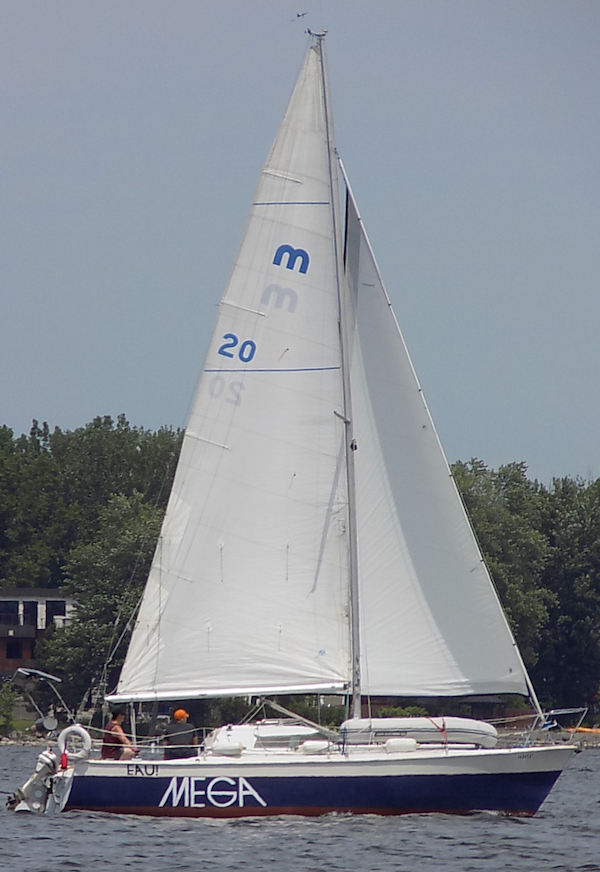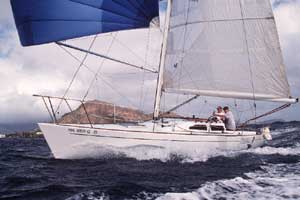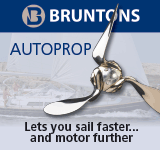F12 was originally called 12 FAJAK.
For ease of launching from a trailer, the design allows both ballast and keel to be lifted out of the boat from the cockpit and removed in separate operations. The ballast actually is raised and lowered into three separate cavities accessible from the top of the keel.
Keel and ballast assembly: 110 kg/242 lbs.
Spinnaker Area: 160 sq.ft./15m2
Hull: Lifting Keel
formerly Drop Keel.
Though not produced in great numbers, this was a breakthrough racing design of the time.
1st(‘Gunboat Rangiriri’), 4th and 5th at 1977 1/2 ton cup(Sydney)
Early use of kevlar composite construction.
Center and aft cockpit models were produced.
A shoal draft, fixed keel version was also available. Draft: 5.5′.
Built in Rockland Maine, by North End Marine – Eric White, builder
Divinycell sandwich construction.
Thanks to Alan Adler for information and updates. From Alan: I wrote an article about Fast-40 in Yachting approx 1981, which attracted 50 letters from people who (like me) wanted a narrow, lightweight yacht. Cape Bay Yachts contacted the 50 and put together the order for 15 boats and ordered a batch from North End. During the run, 3 more customers joined.
Hiking wings fold up for trailering reducing beam to 8.25′.
Lifting keel and rudder.
The HOBIE 33 was available with a drop or fixed keel. Designed to be towed on a US street legal trailer.
Originally developed as joint venture of C&C Yachts and North Sails. The concept of producing a mass marketed 30′ trailerable one-design sailboat was brought to C&C by Peter Barrett of North Sails. Peter and George Cuthbertson oversaw the design concept which was done by the C&C Design Group, headed by Rob Ball. Robert Mazza was the project Manager for the Mega. In addition, Rob Ball, Steve Killing, George Cassian, Bill Goman, Clive Hussy, and George Hazen all had their initials on the Mega drawings.
Many thanks to Rob Mazza for providing this information.
This version of the MEGA 30, called the ONE-DESIGN, was first built in CANADA, and later in the US and Keil Germany. It featured a lifting keel with a bulb. Later US versions, for which the ‘ONE-DESIGN’ designation was dropped, had an entirely different fixed keel. The boat was sold in a number of countries. In Sweden it is known as the RUNN RACER 912.
Photo courtesy Adam Hunt.
Fixed and lifting keel versions.
A rare ‘hopped up’ version with deeper keel and taller rig is called the SONIC 30.
The SYNERGY 1000 is also said to have it’s origins with the SONOMA 30.
